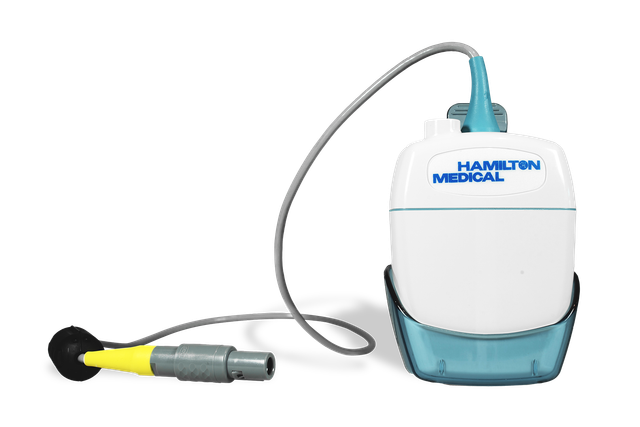
The SpO2 sensors we offer for use with our ventilators were selected according to their accuracy specifications even in challenging conditions.
We offer a wide range of sensors from Nihon Kohden and Masimo for all patient groups. You can choose between a range of different options and parameters, depending on your needs (see table below).
For more information, you can also check our e‑Catalog or visit the Nihon Kohden and Masimo websites.
| Nihon Kohden | Masimo SET | Masimo rainbow SET | |
|---|---|---|---|
SpO2 (oxygen saturation) | |||
Pulse rate | |||
Pleth waveform | |||
Alarm delay | |||
Pi (perfusion index) | |||
PVI (pleth variability index) ( | |||
SpCO (carboxyhemoglobin) ( | |||
SpMet (methemoglobin) ( | |||
SpHb (total hemoglobin) ( | |||
SpOC (oxygen content) ( |
We offer consumables for adult, pediatric, and neonatal patients. You can choose between reusable and single-use products, depending on your institutional policies.

The CAPNOSTAT-5 mainstream CO2 sensor is small, durable, and lightweight.
It provides accurate and reliable monitoring for all intubated patients - from neonates to adults.
You can choose between reusable and single-use airway adapters, depending on your institutional policies.
Together with our flow sensor, the mainstream sensor enables you to perform volumetric capnography for a range of clinical applications.

The LoFlo sidestream CO2 sensor is both flexible and compact, and there's no calibration needed.
It provides consistent, reliable CO2 monitoring for adult, pediatric, and neonatal patients with a sampling rate of 50 ml/min.
Furthermore, the particularly low dead space makes sidestream measurment preferable for neonates.
Hamilton Medical offers consumables for adult, pediatric, and neonatal patients. You can choose between reusable and single-use products, depending on your institutional policies.

Our oxygen sensors monitor the oxygen concentration in the gas being delivered to the patient.
It's an important function that is checked automatically by the ventilator’s internal electronics at regular intervals.
The mechanism of our sensors is that oxygen diffuses across a membrane and is reduced at the anode, producing a voltage in an electrical circuit. The voltage is therefore proportional to the concentration of oxygen at the anode.
Advanced galvanic-type oxygen sensors with excellent stability and accuracy. Choose between leaded or lead-free sensors depending on your country's regulations and institutional policies.